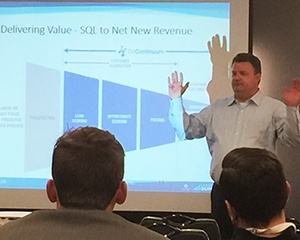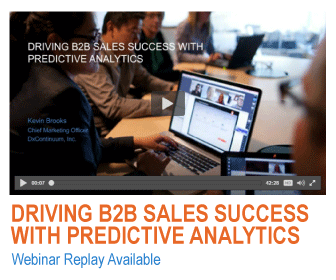Spring is in the air, and it's the time of year when sales conferences are in full swing. Recently, the DxContinuum schedule included stops at the TOPO Sales Summit in San Francisco, the AA-ISP Leadership Summit in Chicago and the Sales 2.0 Conference in Boston.
 Everywhere we've been, people have been talking about predictive analytics. But there seems to be some confusion about analytics intended to improve marketing efforts and analytics focused on improving sales performance. You want both, of course, but not all solutions target the same outcomes.
Everywhere we've been, people have been talking about predictive analytics. But there seems to be some confusion about analytics intended to improve marketing efforts and analytics focused on improving sales performance. You want both, of course, but not all solutions target the same outcomes.
As I recently noted in a blog post over on the Sales 2.0 website, there is a difference between marketing analytics and sales analytics, and confusing the two can create problems.
- Highly scored leads may be unrelated to those likely to close.
- Creating demand requires different activities than creating revenue.
- MQLs are the end of one process; SQLs are the beginning of the next.
Also, when people talk about predictive analytics, many imagine the classic “laboratory” approach with white-coated data scientists, flawless data quality and complex equations on a whiteboard. Because sales is often consumed with immediate quarter-closing priorities, any discussion about data and analytics is often relegated to the finance or marketing teams that have time and resources to engage in laboratory analytics. Sales needs something different: a new kind of “operational” analytics that can work with whatever data is available, fully integrated with their daily workflow and constantly adapting to new conditions and situations.
My colleague Jim Frazee often speaks to sales leaders about this "operational vs. laboratory" approach to analytics, and audiences are always eager to learn more. By taking time to understand the difference and factoring in whether your approach to analytics is more about top-of-funnel marketing or total funnel deal closing you can engage in more effective discussions at your next conference.




